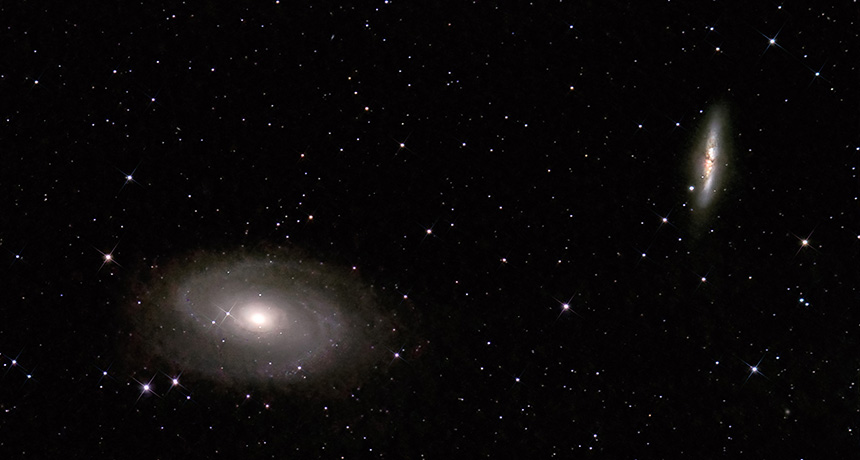Half of the Milky Way comes from other galaxies
Simulations suggest that galactic winds blew the material in from elsewhere

STEALING GAS The galaxies M81 (left) and M82 (right) may be exchanging gas. Supernova explosions in M82 would toss out gas that could be pulled toward M81, helping it bulk up.
Markus Schopfer/Wikimedia Commons (CC BY-SA 2.5)